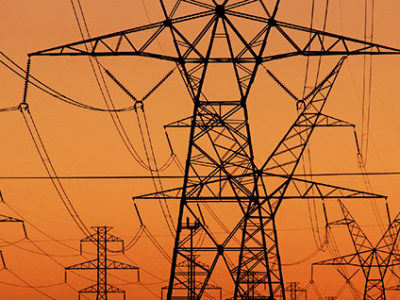Energy
Nov. 2018: Senate Races
The odds are that the Republicans will continue to control the Senate in 2018. The electoral map is very unfavorable to the Democrats, with many vulnerable Democrats up for reelection and only two such Republicans. But even if the GOP keeps control, their victory margin matters. It will determine how much maneuvering room that McConnell …
Continue reading “Nov. 2018: Senate Races”
CONTINUE READINGPublic Lands Watch: BLM Methane Rule (Again)
BLM proposes repeal of rule restricting methane emissions from oil and gas development on federal lands
Tom Schumann drafted this blog post. As previously announced, the Interior Department has published its proposal to roll back an Obama-era regulation aimed at reducing climate change-causing methane releases from oil and gas operations on federal lands. The Obama-era regulation—commonly known as the methane rule—would (1) limit the amount of methane produced by wells that …
Continue reading “Public Lands Watch: BLM Methane Rule (Again)”
CONTINUE READINGTrump Administration to Hold California Hearing on Offshore Oil Drilling Proposal
Sacramento Hearing Likely to Be Both a Raucous and Fundamentally Flawed Affair
Legal Planet colleague Eric Biber this week has published a series of posts on the Trump Administration’s controversial–and deeply flawed–proposal to open most of the nation’s Outer Continental Shelf to offshore oil and gas development. I won’t attempt to retread the ground Eric has ably covered, but want to highlight a major upcoming and related event …
Continue reading “Trump Administration to Hold California Hearing on Offshore Oil Drilling Proposal”
CONTINUE READINGThe impact of Trump’s offshore leasing plans
The Administration’s leasing proposals are not likely to produce an offshore oil and gas boom unless other factors change
This post is the last in a three-part series examining the implications and context of the Trump Administration’s announcement of a proposal to dramatically expand offshore oil and gas development in the United States. The first post focused on the legal context; the second one on the political context. This last post synthesizes the law …
Continue reading “The impact of Trump’s offshore leasing plans”
CONTINUE READINGGuest Blogger Ken Alex: Methane, Black Carbon, and HFCs
Post #5 in a Series on California Climate Policy by Ken Alex, Senior Policy Advisor to Gov. Jerry Brown
[This is the fifth post in a series expressing my view of why California’s actions on climate change are so important and how they will change the world. The introductory post provides an overview and some general context.] One of the most important actions we can take to combat climate change is to halt the emission of …
Continue reading “Guest Blogger Ken Alex: Methane, Black Carbon, and HFCs”
CONTINUE READINGThe politics of Trump’s offshore leasing proposal
Widespread political opposition at the state level poses major obstacles to federal plans
This post is the second in a three-part series looking at the Trump Administration’s announcement of plans to vastly increase offshore oil and gas drilling. The first post, here, focused on the legal context for those announcements. In this post, I’ll discuss the political context. In my last post, I’ll conclude with an analysis of …
Continue reading “The politics of Trump’s offshore leasing proposal”
CONTINUE READINGRenewable New England
The New England states include Massachusetts, Connecticut, Rhode Island, New Hampshire, Vermont, and Maine, with a total population of 8 million. These states are all small in acreage but have larger populations than many western states – for instance, tiny Rhode Island has a larger population than the Dakotas, Wyoming, Montana, or Alaska. In terms …
Continue reading “Renewable New England”
CONTINUE READINGWildfires and the Cost of Electric Service
It turns out, electric transmission is not as cheap as we thought it was.
Economists detest externalities – those nasty hidden costs that businesses don’t face when they sell polluting or dangerous products and services, but that are instead imposed on the public or the environment. And economists are right to be concerned. A polluter that does not pay the cost for its pollution is likely to keep polluting. …
Continue reading “Wildfires and the Cost of Electric Service”
CONTINUE READINGGuest Blogger Ken Alex: Oil and Transportation in California
Post #4 in a Series on California Climate Policy by Ken Alex, Senior Policy Advisor to Gov. Jerry Brown
[This is the fourth post in a series expressing my view of why California’s actions on climate change are so important and how they will change the world. The introductory post provides an overview and some general context.] In 2015, Jerry Brown challenged the State to reduce oil usage in the transportation sector by 50% by 2030. …
Continue reading “Guest Blogger Ken Alex: Oil and Transportation in California”
CONTINUE READINGGuest Blogger Ken Alex: California’s Building Energy Efficiency Mandate
Post #3 in a Series on California Climate Policy by Ken Alex, Senior Policy Advisor to Gov. Jerry Brown
[This is the third post in a series expressing my view of why California’s actions on climate change are so important and how they will change the world. The introductory post provides an overview and some general context.] Energy usage associated with buildings is substantial. There are different ways to calculate it, but the California …
Continue reading “Guest Blogger Ken Alex: California’s Building Energy Efficiency Mandate”
CONTINUE READING







